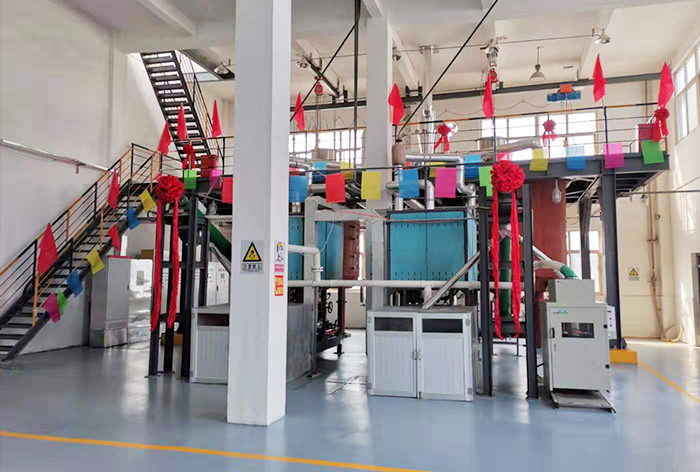
News
Aug . 21, 2024 06:09 Back to list
Production of Chelated Iron Starter Fertilizers for Enhanced Plant Growth Solutions
The Importance of Chelated Iron Starter Fertilizer A Focus on Factory Production
In an era where agriculture is continually evolving to meet the demands of a growing population, the significance of specialized fertilizers cannot be overstated. Among these, chelated iron starter fertilizers stand out as essential for improving plant growth and development. This article explores the production practices in factories that manufacture chelated iron starter fertilizers and the benefits they provide in modern farming.
Chelated iron is a form of iron that plants can easily absorb. It consists of iron ions bonded to organic molecules, which protect the iron from oxidation and precipitation in the soil. This chelation process ensures that iron remains available in a soluble form, crucial for plants—especially those in alkaline soils where iron availability can be significantly reduced. A starter fertilizer containing chelated iron is particularly beneficial during the early stages of plant growth, helping to establish healthy root systems and promoting vigorous vegetation.
The manufacturing process of chelated iron starter fertilizers takes place in specialized factories equipped to handle the complexities of chemical synthesis and formulation. The production begins with the selection of raw materials, including iron salts and chelating agents, such as EDTA (Ethylenediaminetetraacetic acid) or DTPA (Diethylenetriaminepentaacetic acid). These compounds are carefully chosen to create a product that meets specific agronomic needs while complying with agricultural regulations.
Once the raw materials are procured, the first stage of production involves dissolving the iron salts in water. This is typically followed by the addition of the chelating agent under controlled conditions. The temperature, pH, and mixing speed are crucial parameters that dictate the effectiveness of the chelation process. By adjusting these factors, manufacturers can optimize the stability and solubility of the chelated iron compound. This step is vital, as it directly influences the product's bioavailability to plants.
chelated iron starter fertilizer factory

After the chelation process, the solution undergoes purification to remove any insoluble impurities that may have formed. This purification stage is essential for ensuring the final product meets the highest quality standards. The next step is concentration, where excess water is evaporated to achieve the desired consistency. The concentrated solution is then formulated into various product types, including liquid fertilizers, granules, or powders, allowing for versatile application methods.
Following the formulation, rigorous quality control tests are conducted to ensure that the fertilizers meet the specified nutrient levels, pH balance, and chelation efficiency. These tests not only guarantee product efficacy but also help identify any potential issues before the product reaches the market. Compliance with international standards for safety and environmental protection is also a priority during production.
Once the quality assurance phase is completed, the chelated iron starter fertilizers are packaged for distribution
. Factories often employ environmentally friendly packaging solutions to minimize their ecological footprint. This commitment to sustainability is becoming increasingly important in the agricultural sector, as both consumers and farmers seek to promote responsible farming practices.The benefits of using chelated iron starter fertilizers in agriculture are manifold. They support enhanced plant health by preventing iron deficiency, which can lead to chlorosis—a condition where leaves yellow due to insufficient chlorophyll production. By ensuring that crops receive adequate iron from the outset, farmers can expect improved yields and higher-quality produce.
In summary, the production of chelated iron starter fertilizers in factories is a crucial component of modern agriculture. Through sophisticated manufacturing processes and stringent quality control measures, these fertilizers provide essential nutrients that promote healthy plant growth. As the agricultural landscape continues to evolve, the role of chelated iron fertilizers remains fundamental in supporting sustainable and productive farming practices.
-
Polyaspartic Acid Salts in Agricultural Fertilizers: A Sustainable Solution
NewsJul.21,2025
-
OEM Chelating Agent Preservative Supplier & Manufacturer High-Quality Customized Solutions
NewsJul.08,2025
-
OEM Potassium Chelating Agent Manufacturer - Custom Potassium Oxalate & Citrate Solutions
NewsJul.08,2025
-
OEM Pentasodium DTPA Chelating Agent Supplier & Manufacturer High Purity & Cost-Effective Solutions
NewsJul.08,2025
-
High-Efficiency Chelated Trace Elements Fertilizer Bulk Supplier & Manufacturer Quotes
NewsJul.07,2025
-
High Quality K Formation for a Chelating Agent – Reliable Manufacturer & Supplier
NewsJul.07,2025
